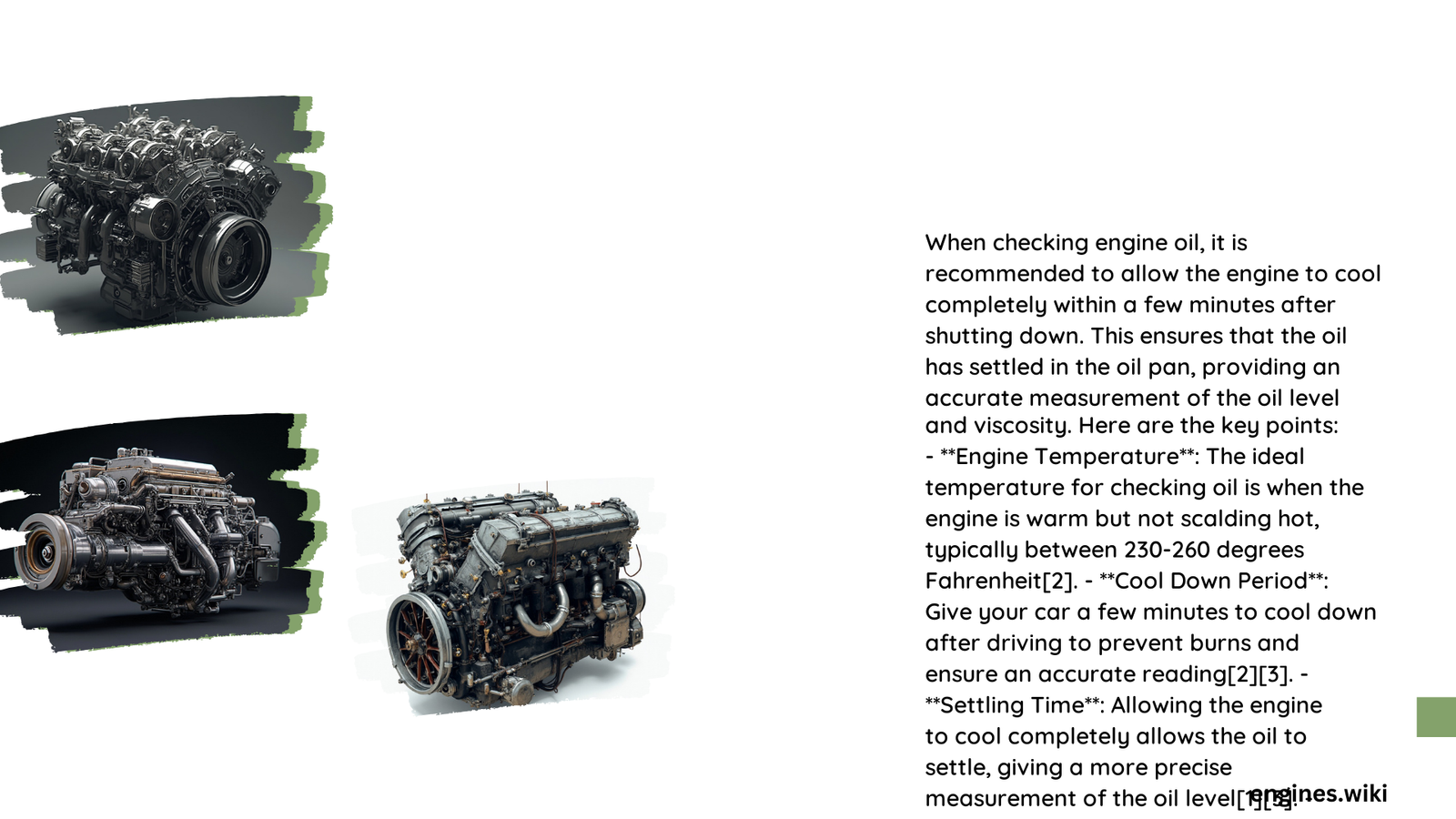When checking engine oil, allowing the engine to cool completely is crucial for obtaining an accurate oil level reading. Hot engine oil can provide misleading measurements due to expanded volume and altered viscosity. Waiting 5-10 minutes after shutting off the engine ensures the oil settles in the oil pan, giving you a precise assessment of your vehicle’s lubrication status and preventing potential mechanical issues.
Why Does Engine Temperature Matter When Checking Oil?
What Happens When Oil is Checked on a Hot Engine?
When you check engine oil immediately after driving, several critical issues can arise:
- Inaccurate Oil Level Readings: Hot oil expands and spreads differently in the engine
- Potential Measurement Errors: Oil viscosity changes with temperature
- Risk of Incorrect Maintenance Decisions
| Temperature Range | Oil Behavior | Recommended Action |
|---|---|---|
| 250-300°F | Extremely Thin | Wait 10 Minutes |
| 100-200°F | Moderately Expanded | Wait 5-7 Minutes |
| Below 100°F | Settled | Check Immediately |
How Long Should You Wait Before Checking Oil?
Experts recommend a specific cooling protocol:
- Immediate Post-Drive: Wait 5-10 minutes
- Long Drive: Allow 10-15 minutes cooling time
- Cold Start: Can check immediately
What Are the Risks of Checking Hot Oil?
Checking engine oil on a hot engine can lead to:
- Misreading oil levels
- Potential overfilling or underfilling
- Incorrect viscosity assessment
- Potential long-term engine damage
Best Practices for Accurate Oil Checking

Where Should You Park to Check Oil?
Recommended Parking Conditions:
– Flat, level ground
– Stable surface
– Away from traffic
– Parking brake engaged
What Tools Do You Need?
Essential oil-checking equipment:
– Clean white rag or paper towel
– Proper lighting
– Gloves (optional)
– Funnel (if adding oil)
Technical Insights on Oil Temperature
How Does Temperature Affect Oil Viscosity?
Oil viscosity changes dramatically with temperature:
– At 32°F: Oil becomes significantly thicker
– At 212°F: Oil becomes extremely thin
– Optimal checking temperature: 70-80°F
Can Modern Synthetic Oils Improve Checking Accuracy?
Modern synthetic oils offer:
– More consistent viscosity
– Better temperature performance
– Enhanced measurement reliability
Common Mistakes to Avoid
What Should You Never Do When Checking Oil?
- Check oil immediately after driving
- Check on an uneven surface
- Ignore manufacturer’s specific recommendations
- Use dirty or contaminated checking tools
Professional Recommendations
When to Seek Professional Help?
Consider professional inspection if:
– Consistent low oil levels
– Unusual oil color
– Frequent oil consumption
– Unexplained engine performance issues
Final Recommendations
Key Takeaways:
– Always allow engine to cool 5-10 minutes
– Park on level ground
– Use clean checking tools
– Follow manufacturer guidelines
Pro Tip: Keep a log of your oil checks to track potential issues and maintenance patterns.
